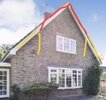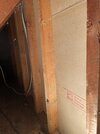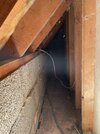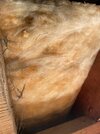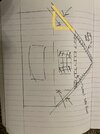Hi newbie here. Not sure if this is in the right section but,
I do have some diy experience but I’m looking for some advice on insulating the roof of my house. Last year I had foam put in the loft which is shown by the red lines. Problem is the rest of the roof has no insulation as the foam didn’t get sprayed that far down. I was tempted to get them back and do the job but it was over a year ago now and it’s only after putting a socket in I have seen and felt the cold in the yellow area.
I was thinking of the following options as it is stud work and room in roof style.
Pir board cut and siliconed in place on the vertical part and the try and put some on the sloping roof part or do I go for mineral wool, but then it may fall out of the vertical part?
I am conscious to keep the air flowing as the soffits are vented.
Any opinions on what’s best? I have an 8 month old baby and want the room to be warm for him.
I do have some diy experience but I’m looking for some advice on insulating the roof of my house. Last year I had foam put in the loft which is shown by the red lines. Problem is the rest of the roof has no insulation as the foam didn’t get sprayed that far down. I was tempted to get them back and do the job but it was over a year ago now and it’s only after putting a socket in I have seen and felt the cold in the yellow area.
I was thinking of the following options as it is stud work and room in roof style.
Pir board cut and siliconed in place on the vertical part and the try and put some on the sloping roof part or do I go for mineral wool, but then it may fall out of the vertical part?
I am conscious to keep the air flowing as the soffits are vented.
Any opinions on what’s best? I have an 8 month old baby and want the room to be warm for him.


